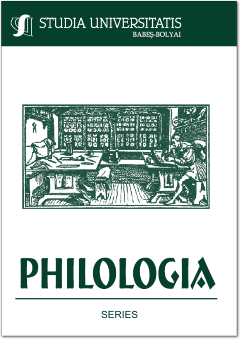WHAT TIME DOES IN LANGUAGE: A CROSS-LINGUISTIC COGNITIVE STUDY OF SOURCE RELATED VARIATION IN VERBAL TIME METAPHORS IN AMERICAN ENGLISH, FINNISH AND HUNGARIAN
WHAT TIME DOES IN LANGUAGE: A CROSS-LINGUISTIC COGNITIVE STUDY OF SOURCE RELATED VARIATION IN VERBAL TIME METAPHORS IN AMERICAN ENGLISH, FINNISH AND HUNGARIAN
Author(s): Zsuzsa MáthéSubject(s): Cognitive linguistics
Published by: Studia Universitatis Babes-Bolyai
Keywords: cognitive linguistics; corpus linguistics; conceptual metaphor theory; metaphorical entailments; source domain;
Summary/Abstract: What Time Does in Language: a Cross-Linguistic Cognitive Study of Source Related Variation in Verbal Time Metaphors in American English, Finnish and Hungarian. Such a universal yet abstract concept as time shows variation in metaphorical language. This research focuses on metaphorical language within the framework of the cognitive metaphor theory, investigating time through a contrastive cross-linguistic approach in three satellite-framed languages. By combining qualitative and quantitative methods, this study attempts to identify what time does in language in a metaphorical context, with a focus on verbs in causative constructions (e.g. time heals) as well as manner of motion verbs (e.g. time rushes), through an empirical corpus-based study complemented by the lexical approach. The two main conceptual metaphors that are investigated in this study are TIME IS A CHANGER and TIME IS A MOVING ENTITY. While these two conceptual metaphors are expected to be frequent in all three languages, differences such as negative/positive asymmetry or preference of a type of motion over another are expected to be found. The primary objective is to explore such differences and see how they manifest and why. The hypothesis is that variations among the three languages related to the source domain (CHANGER and MOVING ENTITY), are more likely to be internal and not external. The purpose is to investigate these variations and to determine what cognitive underpinnings they can be traced back to, with a focus on image schemas. The study reveals that source internal variation does prevail over source external variation. The results show that cross-linguistic differences of such a relevant concept as time do exist but more often through unique characteristics of the same source domain rather than new, distinctive domains.
Journal: Studia Universitatis Babes-Bolyai - Philologia
- Issue Year: 66/2021
- Issue No: 2
- Page Range: 215-238
- Page Count: 24
- Language: English

